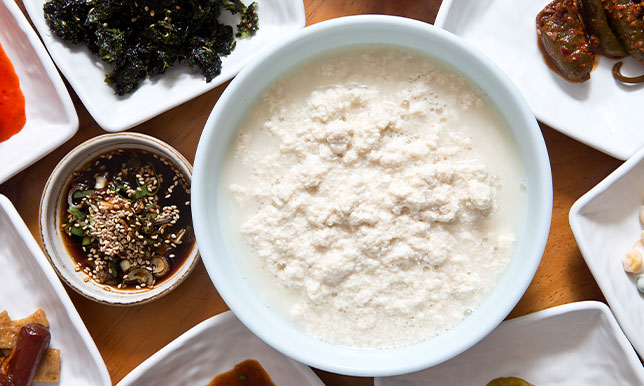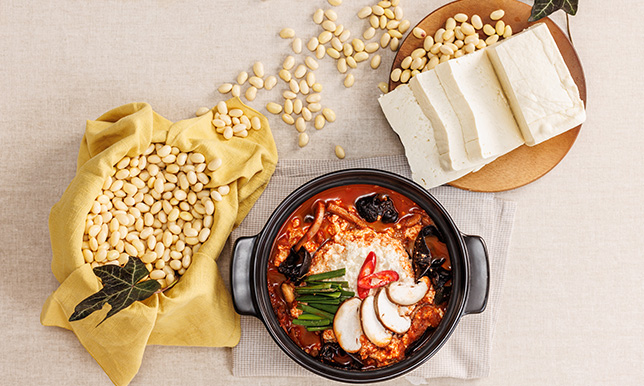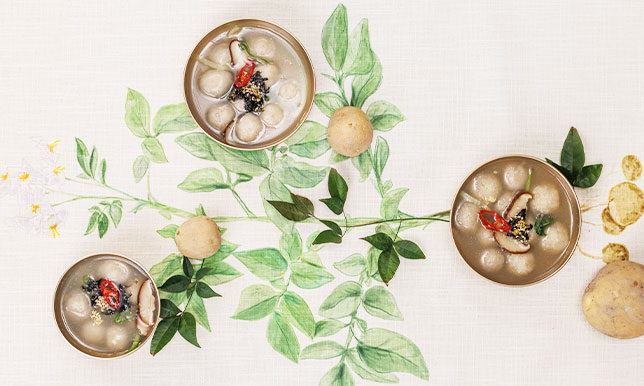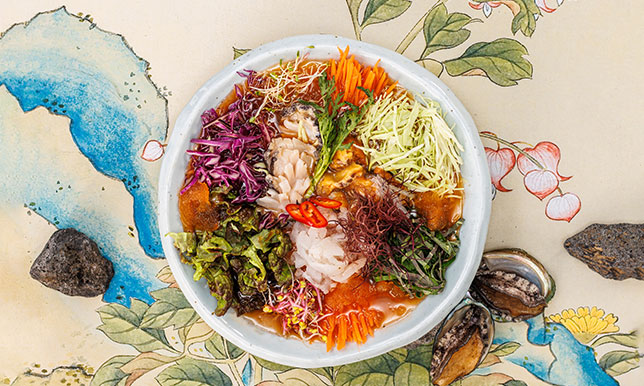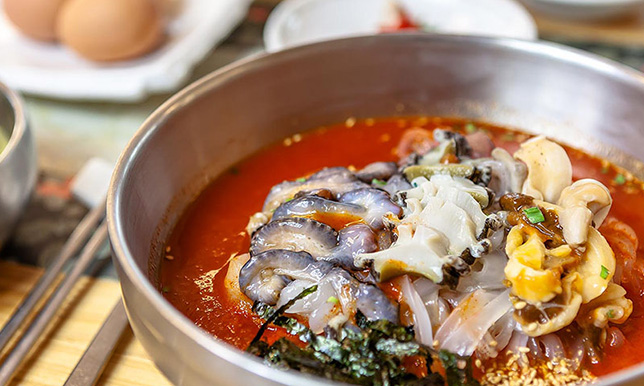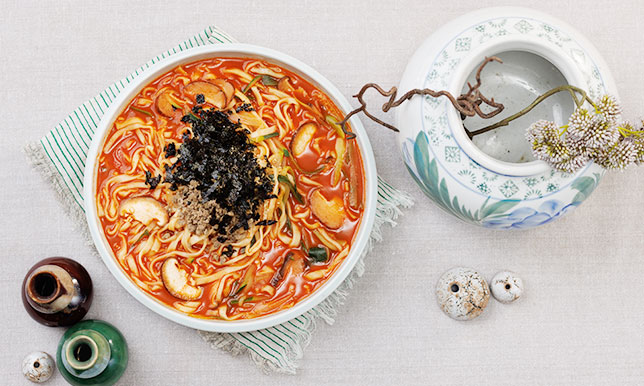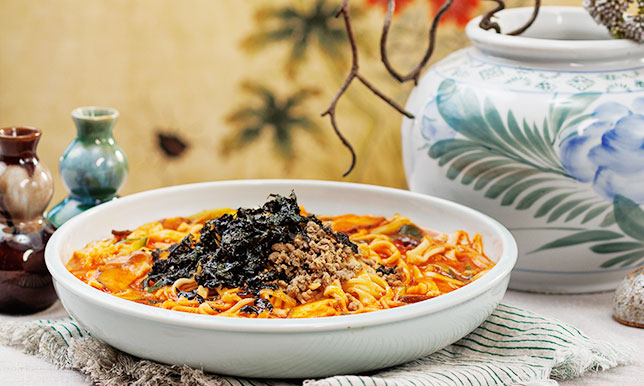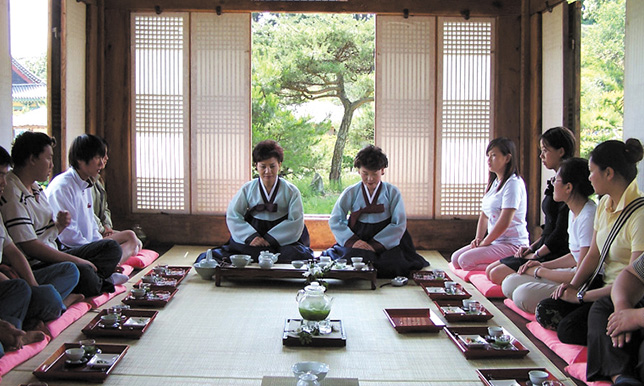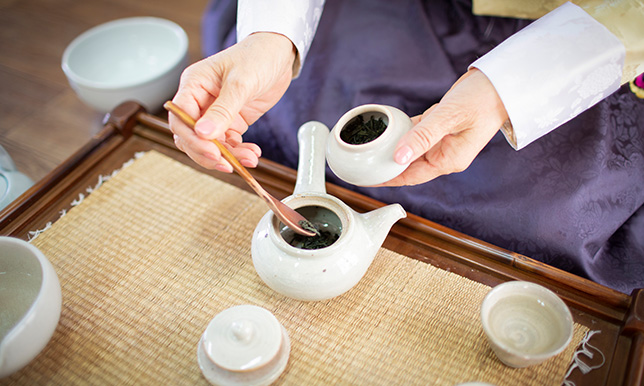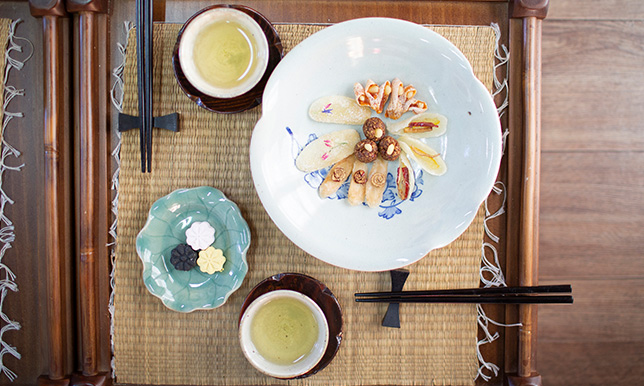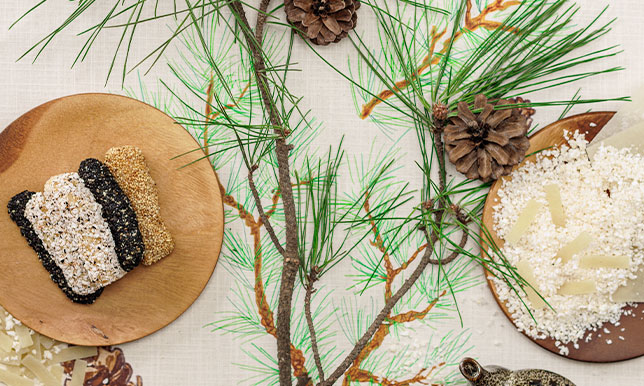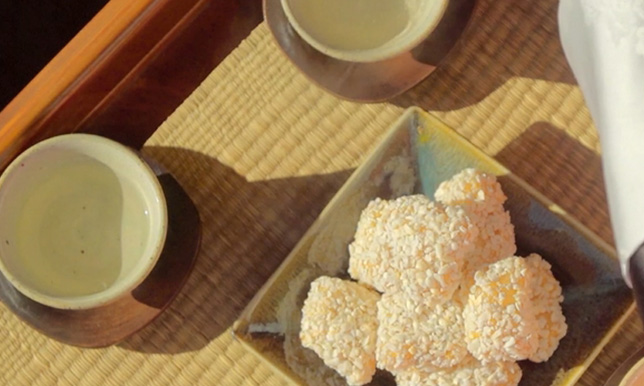Story of Gangneung Food
Gangneung's Food Tradition
Gangneung's food culture was born in its unique ecological environment.
Wild edible greens and mushrooms harvested from mountains and valleys, seaweed and seafood collected and caught from lakes, rivers, and oceans, as well as various grains and vegetables from small but rich rice paddies and fields, produce a variety of foods in Gangneung. As a mountainous area where grains were scarce in the past, it had used wild herbs, potatoes, buckwheat, and corn, among others, to develop "roughage food," such as wild greens, Ongshimi, potato pancakes, and buckwheat pancakes, as unique local foods.
On the other side, the wealthy elite favored gastronomic customs, including Korean traditional sweets and tea ceremonies as well as Confucian ceremonial cuisine.
Gangneung foods are evolving creatively to keep up with the time change.
"Roughage foods," which relied on hardy plants, are evolving into "healthy foods", and Gangneung’s distinctive ingredients and recipes have expanded beyond traditional Korean cuisine and are now employed in new dishes through joining different culinary cultures around the world.
Ongshimi (Matzo Ball Soup)
Potato Ongsimi is a popular Gangneung specialty food.
When rice and grains were scarce and it was difficult to store food for an extended period of time, the people of Gangneung devised a recipe to extract starch from rotting or frozen potatoes.
They made starch from potatoes and used the starch powder to make a variety of foods. Potato cakes, potato pancakes, and Ongshimi are typical dishes. Potato Ongshimi is a dish made by boiling anchovies, kelp, and potatoes in broth, then adding Ongshimi, which is formed from wet potato starch in round shapes and the size of a bird's egg, as well as buckwheat noodles or kalguksu.
Mulhoe (Cold Raw Fish Soup)
Mulhoe in Gangneung represents the fishermen's lifestyle. While working on a boat, they simply sliced newly caught fish, poured water, and added soybean paste and red pepper paste to make it.
Gangneung's mulhoe is distinguished by its spicy flavor. Cucumber, diced radish, cabbage, and other vegetables are added to a bowl of thinly sliced squid or flounder, served with vinegared red pepper paste or mustard-mixed broth. In addition to squid, seafood such as sea cucumbers, abalone, sea squirts, and sliced raw fish can be added to savor the flavor and aroma of the sea.
Jang Kalguksu (Long-Cut Noodle)
Jang Kalguksu is one of Gangneung's signature dishes.
It is a slow food made from fermented soybean paste and red pepper paste, both of which are traditional Korean cuisines.
The spiciness of the soup, which is based on soybean paste and slightly spiced with red pepper paste, is adjusted with red pepper powder. It is said that Jang Kalguksu was created by simmering Kalguksu seasoned with red pepper paste and soybean paste instead of salt in mountainous regions where salt was scarce. It is a creative dish that substitutes paste sauce for salt, which is unavailable due to its geographical location.
Tea Ceremony
Gangneung has a long history of drinking and serving tea. Gangneung's tea ceremonies, which began with the Dongpo Tea Ceremony in 1982, now include Hansong, Gwaneum, Yesong, Imyeong, and Saimdang, and these six tea ceremonies are affiliated with the Gangneung Tea Master Society. Whenever there is a major event in Gangneung, everyone meets at a place for a joint tea party.
Tea ceremony experiences are always available in the "Chohui Traditional Tea Experience Center" in the Heo Gyun and Heonanseolheon Memorial Hall, contributing to the preservation and spread of the tea ceremony culture in Gangneung.
Also, the Gangneung Cultural Center's tea ceremony academy curriculum is widely accepted since it extends the tea ceremony tradition to the younger generation.
Hangwa (Traditional Sweets)
Hangwa is a classic Korean savory fried glutinous rice snack.
It is a natural slow food that takes over 30 days to be made by mixing the gentle sweetness of grain syrup with the savory flavor of grains.
The key to Gangneung Hangwa's unique recipe involves fermenting glutinous rice for an extended period of time. Hangwa, a communal snack made by puffing out little glutinous rice cakes, is a food that is essential to festivities in the sense of wishing for fertility and happiness in the family.

